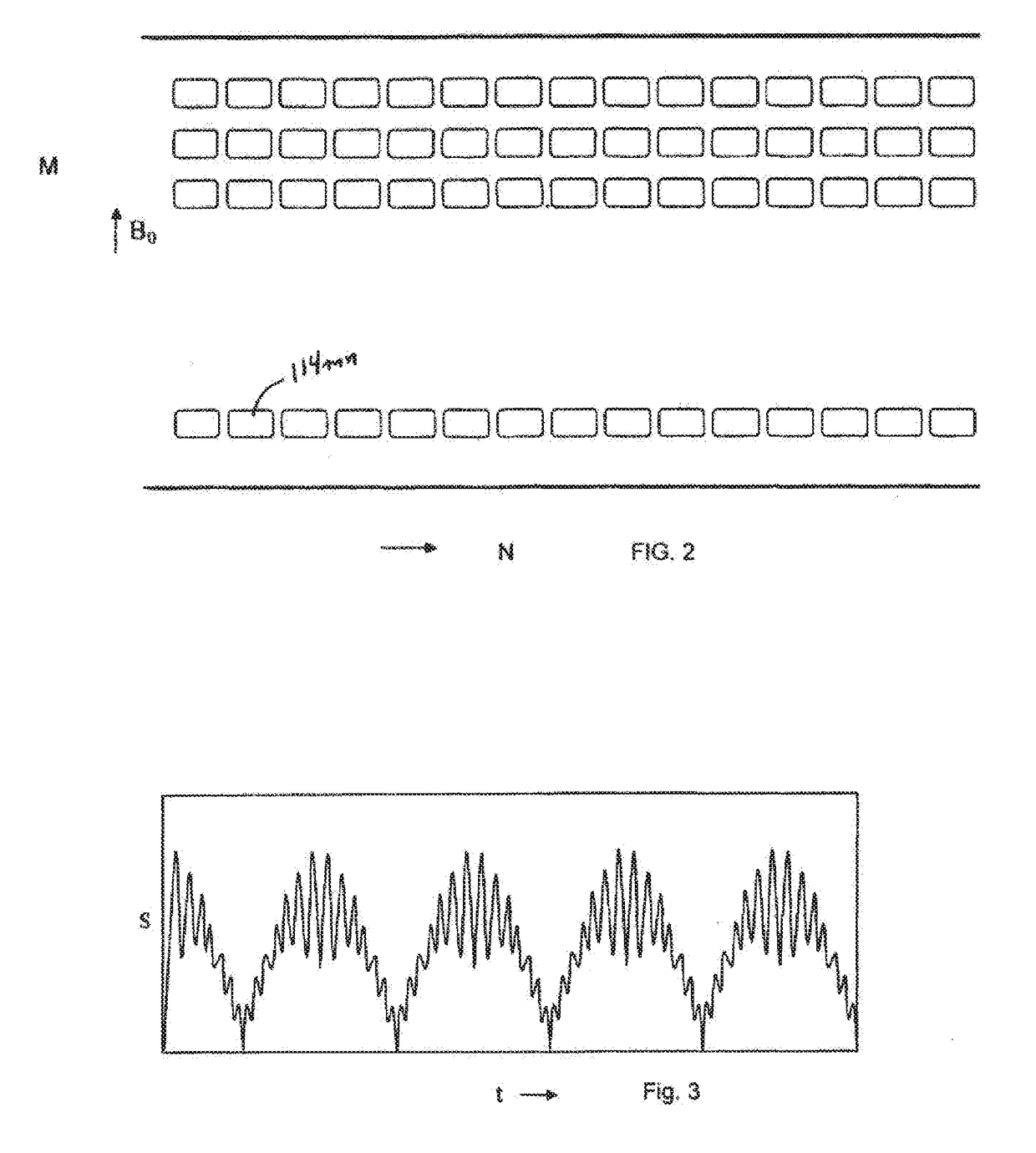Ultrafast MRI system and method
a magnetic resonance imaging and ultra-fast technology, applied in the field of imaging, can solve the problems of inefficiency of spatial sensitivity encoding, inhomogeneity of susceptibility changes, noise from eddy currents on the body surface, etc., to improve the signal-to-noise ratio of images, improve the strength of main magnetic fields, and improve the resolution
- Summary
- Abstract
- Description
- Claims
- Application Information
AI Technical Summary
Benefits of technology
Problems solved by technology
Method used
Image
Examples
Embodiment Construction
[0027]An example of a preferred embodiment can operate by using some of the basic components of a conventional MRI system, such as a magnet generating a main magnetic field B0 in an imaging volume, a source of RF excitation pulses, a source of an a magnetic gradient, a computer configured to process MR signals and to control the overall operation of the system, and a workstation to format and process MR images and allow operator control. The new approach described in this patent specification adds other components, and programs the computer in the system to carry out different operations. The new components include a drastically different 3D array of very small receiver coils surrounding the imaging volume where the output of each of the small coils is an MRI signal comprising contributions from the entire imaging volume. The new approach further includes modifications in the control over, and if desired the structure of, the RF pulse and gradient generators, and providing a differe...
PUM
 Login to View More
Login to View More Abstract
Description
Claims
Application Information
 Login to View More
Login to View More - R&D
- Intellectual Property
- Life Sciences
- Materials
- Tech Scout
- Unparalleled Data Quality
- Higher Quality Content
- 60% Fewer Hallucinations
Browse by: Latest US Patents, China's latest patents, Technical Efficacy Thesaurus, Application Domain, Technology Topic, Popular Technical Reports.
© 2025 PatSnap. All rights reserved.Legal|Privacy policy|Modern Slavery Act Transparency Statement|Sitemap|About US| Contact US: help@patsnap.com



